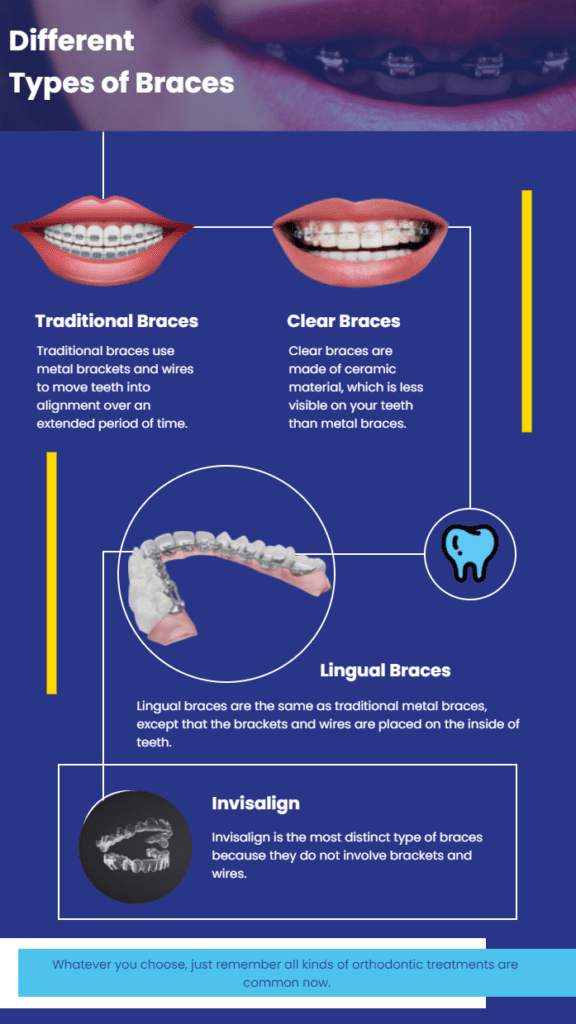Comprehensive Overview to Orthodontics Treatments for Correcting Dental Misalignments
In the realm of orthodontics, the trip to achieving a completely lined up smile includes a myriad of treatments tailored to correct oral imbalances. From conventional braces to unnoticeable aligners and even surgical alternatives, the area of orthodontics uses a variety of remedies to attend to differing levels of dental irregularities. Comprehending the details of each treatment, including their mechanisms, benefits, and prospective disadvantages, is important in making informed decisions about one's orthodontic therapy. As we browse through the thorough overview to orthodontic procedures for dealing with dental misalignments, the intricate information of each method will certainly unfold, clarifying the course toward a functional and unified oral alignment.
Orthodontic Procedures Summary

Along with traditional braces and clear aligners, orthodontists may additionally advise various other treatments like headgear, palatal expanders, or retainers to resolve certain placement concerns (orthodontist). These treatments are customized to every person's special needs and might involve a mix of treatments to attain the wanted results. Normal adjustments and surveillance are important parts of orthodontic treatment to make sure development is on track and to make any type of necessary adjustments in the process. By going through orthodontic procedures, people can not only accomplish a straighter grin but likewise boost their total dental health and feature.
Conventional Dental Braces: Exactly How They Work
When considering orthodontic therapies for dental imbalances, conventional dental braces stand out as a time-tested method for correcting teeth placing. Conventional dental braces consist of braces, cables, and bands that function together to use continuous stress on the teeth, gradually relocating them into the preferred placement.
One secret facet of how typical braces job is the procedure of bone renovation. As stress is put on the teeth via the braces, the bone bordering the teeth is improved to support the new tooth placements. This renovation is essential for the long-lasting security of the corrected positioning. People will need routine changes at the orthodontist's office to make sure the dental braces remain to apply the proper pressure for efficient teeth activity.
Invisible Aligners: Cons and pros
Unnoticeable aligners use a very discreet and convenient option to standard dental braces for remedying oral misalignments. These clear, custom-made trays are practically invisible when used, making them an attractive option for people looking for a more cosmetically pleasing orthodontic therapy. Among the key benefits of unseen aligners is their removability, permitting easier upkeep of dental hygiene compared to conventional braces. Clients can remove the aligners before consuming or cleaning their teeth, minimizing the danger of food obtaining stuck in the appliance and simplifying the dentist info cleansing procedure.

Surgical Orthodontic Options
Surgical interventions in orthodontics present feasible alternatives for addressing complex dental misalignments that may not be properly resolved through traditional orthodontic treatments. While unseen aligners and typical dental braces can correct many orthodontic issues, certain cases require surgical treatment to attain optimum outcomes. Surgical orthodontic alternatives are typically recommended for severe malocclusions, significant jaw disparities, and cases where the underlying bone structure needs modification to attain correct placement.
One usual surgical orthodontic procedure is orthognathic surgical treatment, which includes repositioning the jaws to correct functional issues such as trouble talking or chewing. This surgery is often performed in cooperation with an orthodontist that assists align the teeth prior to and after the procedure. Surgical orthodontics might also entail procedures to reveal impacted teeth, get rid of excess gum tissue, or improve the jawbone to produce a more unified facial profile.
Prior to considering medical orthodontic choices, clients undergo a thorough analysis to identify the necessity and potential advantages of such treatments. cumming braces. While surgical procedure may seem complicated, it can considerably improve both the feature and aesthetic appeals of the smile in cases where conventional orthodontic therapies fail
Retainers and Post-Treatment Treatment

Post-treatment treatment entails following the orthodontist's directions vigilantly. This might consist of proper oral health techniques, attending follow-up visits, and putting on the retainers as prescribed. Failure to adhere to post-treatment treatment guidelines can result in relapse, where the teeth slowly relocate back in the direction of their original positions. Constant retainer wear, good dental health, and normal oral check-ups are necessary for keeping the outcomes achieved through orthodontic surgical treatment and ensuring the long-term stability of the remedied oral placement.
Conclusion
Finally, orthodontic procedures provide various options for remedying dental misalignments. Typical braces make use of metal brackets and cords to move teeth right into correct placement. Unseen aligners give an even more very discreet choice however may not be suitable for all cases. Surgical orthodontic alternatives are offered for much more severe imbalances. Retainers are commonly used post-treatment to keep the new alignment. On the whole, orthodontic treatments can efficiently boost oral health and visual appearance.
As we browse with the comprehensive overview to orthodontic treatments for remedying oral imbalances, the intricate information of each technique will certainly unfold, losing light on the path towards a harmonious and functional oral alignment. - aligners
One of the most usual orthodontic treatments is the use of dental braces, which consist of steel brackets and cords that use gentle pressure to progressively shift teeth right into the wanted position.When taking into consideration orthodontic treatments for oral imbalances, traditional braces stand out as a reliable method for fixing teeth placing. In addition, unnoticeable aligners might not be ideal for complex orthodontic problems that need even more substantial teeth movement, as they are usually advised for mild to moderate situations. Retainers are personalized orthodontic devices developed to hold teeth in their fixed placements after the conclusion of orthodontic therapy.